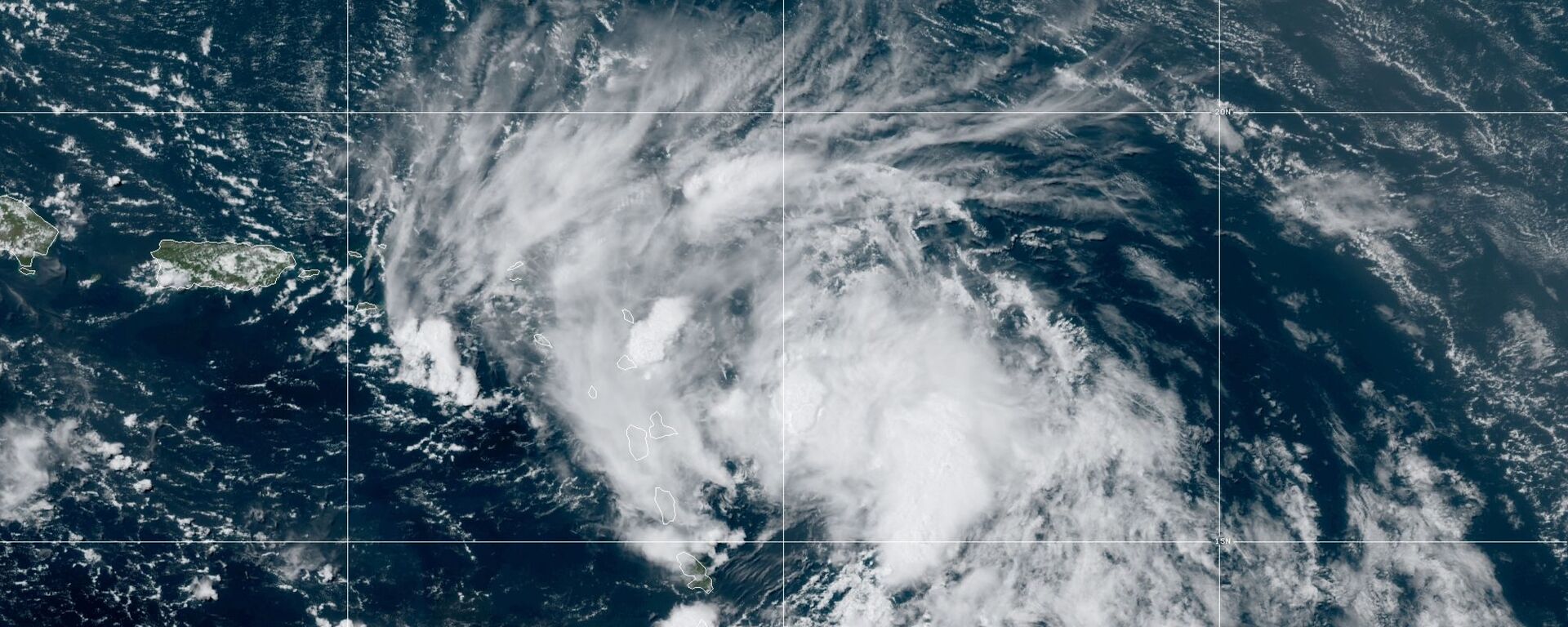https://sputnikglobe.com/20220124/gulf-stream-becoming-stronger-and-warmer-accelerating-heating-of-arctic--norwegian-study-1092476225.html
Gulf Stream Becoming Stronger and Warmer, Accelerating Heating of Arctic – Norwegian Study
Gulf Stream Becoming Stronger and Warmer, Accelerating Heating of Arctic – Norwegian Study
Sputnik International
Thanks to the warm current the Gulf Stream, areas adjacent to it, such as coastal Norway and Russia's Kola Peninsula, have a milder climate than other regions... 24.01.2022, Sputnik International
2022-01-24T06:33+0000
2022-01-24T06:33+0000
2022-01-24T06:33+0000
arctic
atlantic ocean
newsfeed
europe
norway
scandinavia
https://cdn1.img.sputnikglobe.com/img/107682/28/1076822896_0:0:3641:2048_1920x0_80_0_0_d391049fa5c0f6a7ce11e3ec3b720b22.jpg
The Gulf Stream, a system of warm currents in the North Atlantic Ocean stretching from Florida to the Scandinavian Peninsula, the Svalbard archipelago, and the Arctic Ocean, has become significantly stronger, a joint crew of Norwegian researchers have concluded.Their results indicated that the heat transport has become about 30 percent stronger. In other words, much more and warmer water goes north in a shorter time.This, in turn, leads to a warmer climate in swaths of coastal Norway, the Arctic isles, and Russia's Kola Peninsula. Norway's Meteorological Insitute concluded that winter in the city of Bodø, Nordland County, has become two months shorter."We expected to see increased temperature as a result of global warming. It is therefore not surprising that the water flowing north is warmer. But there is really nothing that should indicate an increase in volume transport. That's surprising", Smedsrud explained.According to Smedsrud, there are two likely explanations. The first is stronger winds push more water north and toward the coast. Yet, whether the winds will persist in the future, is uncertain."If we look even further back in time, to the 1850s, it blew as much as today", Smedsrud explained.The second is a larger density difference between the water masses which make the current that brings with it huge masses of warm water. This results in a vicious circle, as less ice causes more heat from the sea to enter the atmosphere, thus accelerating the process.In particular, Norway's Svalbard archipelago located about midway between the northern coast of Norway and the North Pole, has been indicated as a "hotspot for global warming", as it warms up at a much higher pace compared to continental Norway. Every decade since 1970, Svalbard has become about a degree warmer. The heat transport along Norway's coast is seen as one of the reasons for it.Previous research, however, indicated that the Gulf Stream is weakening and is at risk of complete degradation, threatening far-reaching implications for the US and Europe. Thanks to the Gulf Stream, areas adjacent to the Atlantic Ocean have a milder climate than other regions at the same geographical latitude because masses of warm water heat the air above them, which is transferred to Europe by westerly winds. Positive deviations of winter air temperature from average latitude values reach up to 20 degrees in Norway, whose historical maritime proficiency rests on access to ice-free waters. The Gulf Stream is also the underlying reason for the founding and the growth of Russia's Murmansk, the largest city above the Arctic Circle and an ice-free port as well.
https://sputnikglobe.com/20210227/gulf-stream-hits-its-weakest-point-in-1000-years-research-says-1082207795.html
arctic
atlantic ocean
norway
scandinavia
Sputnik International
feedback@sputniknews.com
+74956456601
MIA „Rossiya Segodnya“
2022
News
en_EN
Sputnik International
feedback@sputniknews.com
+74956456601
MIA „Rossiya Segodnya“
Sputnik International
feedback@sputniknews.com
+74956456601
MIA „Rossiya Segodnya“
arctic, atlantic ocean, newsfeed, europe, norway, scandinavia
arctic, atlantic ocean, newsfeed, europe, norway, scandinavia
Gulf Stream Becoming Stronger and Warmer, Accelerating Heating of Arctic – Norwegian Study
Thanks to the warm current the Gulf Stream, areas adjacent to it, such as coastal Norway and Russia's Kola Peninsula, have a milder climate than other regions at the same geographical latitude, enjoying much warmer winters and access to ice-free ports.
The Gulf Stream, a system of warm currents in the North Atlantic Ocean stretching from Florida to the Scandinavian Peninsula, the Svalbard archipelago, and the Arctic Ocean, has become significantly stronger, a joint crew of Norwegian researchers have concluded.
"The flow of water has increased quite evenly", Lars Henrik Smedsrud, a professor at the University of Bergen and a researcher at the Bjerknes Centre, told national broadcaster NRK. "This means that the Gulf Stream into the Nordic seas has become stronger".
Their results indicated that the heat transport has become about 30 percent stronger. In other words, much more and warmer water goes north in a shorter time.
This, in turn, leads to a warmer climate in swaths of coastal Norway, the Arctic isles, and Russia's Kola Peninsula. Norway's Meteorological Insitute concluded that winter in the city of Bodø, Nordland County, has become two months shorter.
"We expected to see increased temperature as a result of global warming. It is therefore not surprising that the water flowing north is warmer. But there is really nothing that should indicate an increase in volume transport. That's surprising", Smedsrud explained.
According to Smedsrud, there are two likely explanations. The first is stronger winds push more water north and toward the coast. Yet, whether the winds will persist in the future, is uncertain.
"If we look even further back in time, to the 1850s, it blew as much as today", Smedsrud explained.
The second is a larger density difference between the water masses which make the current that brings with it huge masses of warm water. This results in a vicious circle, as less ice causes more heat from the sea to enter the atmosphere, thus accelerating the process.
In particular, Norway's Svalbard archipelago located about midway between the northern coast of Norway and the North Pole, has been indicated as a "hotspot for global warming", as it warms up at a much higher pace compared to continental Norway. Every decade since 1970, Svalbard has become about a degree warmer. The heat transport along Norway's coast is seen as one of the reasons for it.
"The heat transport that goes up to the Svalbard area makes the ice disappear, and the released heat goes up into the atmosphere", climatologist Inger Hanssen-Bauer of the Norwegian Meteorological Institute said.
Previous research, however, indicated that the Gulf Stream is weakening and is at risk of complete degradation, threatening far-reaching implications for the US and Europe.
Thanks to the Gulf Stream, areas adjacent to the Atlantic Ocean have a milder climate than other regions at the same geographical latitude because masses of warm water heat the air above them, which is transferred to Europe by westerly winds. Positive deviations of winter air temperature from average latitude values reach up to 20 degrees in Norway, whose historical maritime proficiency rests on access to ice-free waters. The Gulf Stream is also the underlying reason for the founding and the growth of Russia's Murmansk, the largest city above the Arctic Circle and an ice-free port as well.

27 February 2021, 19:59 GMT


